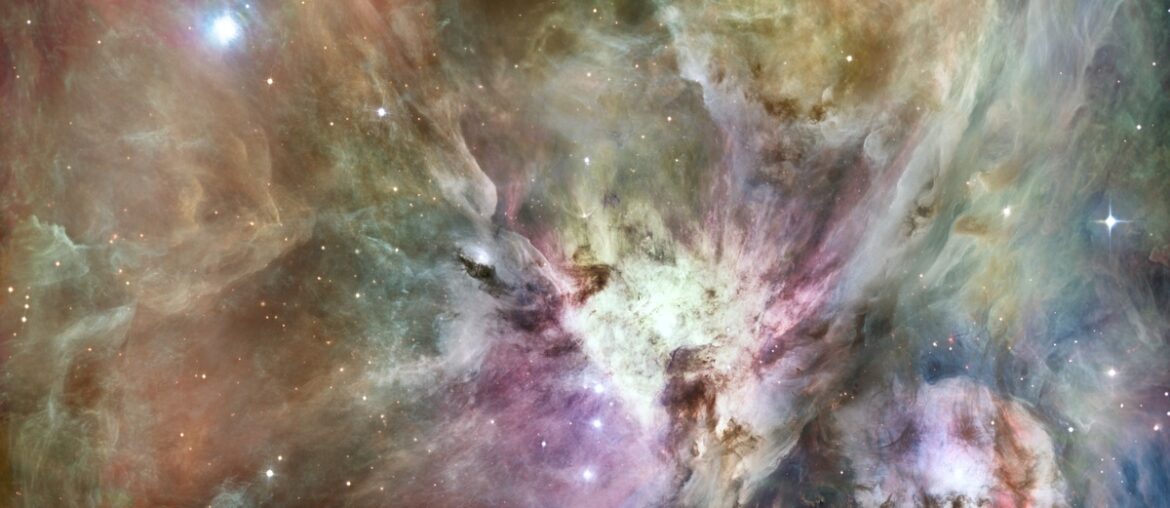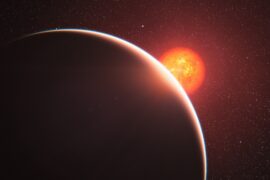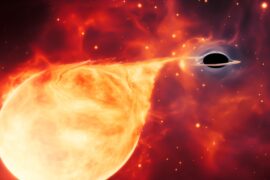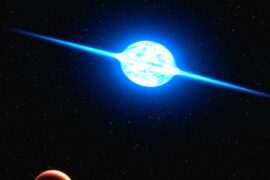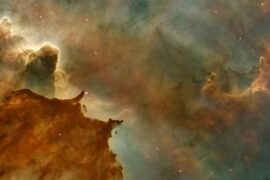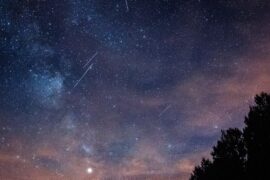The Milky Way is filled with clouds of gas and dust that trace where stars are born and where they end their lives. Across the galaxy these nebulae form dark lanes, bright emission regions and delicate reflection patches that shape what we see through a telescope or in wide-field photos.
There are 84 Nebulae in the Milky Way, ranging from Ant Nebula to Wizard Nebula, covering planetary, emission, reflection and dark types. The list presents each object with Catalog IDs,Type,Distance (ly) so you can compare classifications and distances at a glance; you’ll find below.
How are distances to nebulae measured?
Distances depend on the nebula type and available data: nearby nebulae use parallax or association with stars whose distances are known, while more distant regions rely on spectroscopic parallax, kinematic methods tied to galactic rotation, or modelling of embedded star clusters; uncertainties are often noted in catalogs.
Which of these nebulae can I observe with amateur gear?
Many nebulae are visible with binoculars or small telescopes under dark skies—bright emission regions and some planetary nebulae are the easiest—while faint, extended or compact objects need larger apertures and longer exposures; use the Catalog IDs,Type,Distance (ly) columns below to check magnitude and expected visibility.
Nebulae in the Milky Way
| Name | Catalog IDs | Type | Distance (ly) |
|---|---|---|---|
| Orion Nebula | M42, NGC 1976 | Emission Nebula | 1,344 |
| Crab Nebula | M1, NGC 1952 | Supernova Remnant | 6,500 |
| Ring Nebula | M57, NGC 6720 | Planetary Nebula | 2,300 |
| Eagle Nebula | M16, NGC 6611 | Emission Nebula | 7,000 |
| Carina Nebula | NGC 3372, Eta Carinae Nebula | Emission Nebula | 7,500 |
| Trifid Nebula | M20, NGC 6514 | Emission/Reflection | 5,200 |
| Dumbbell Nebula | M27, NGC 6853 | Planetary Nebula | 1,360 |
| Lagoon Nebula | M8, NGC 6523 | Emission Nebula | 4,100 |
| Helix Nebula | NGC 7293, Caldwell 63 | Planetary Nebula | 700 |
| Veil Nebula | NGC 6960, NGC 6992/5, Cygnus Loop | Supernova Remnant | 2,100 |
| Horsehead Nebula | Barnard 33, IC 434 | Dark Nebula | 1,500 |
| North America Nebula | NGC 7000, Caldwell 20 | Emission Nebula | 2,200 |
| Cat’s Eye Nebula | NGC 6543, Caldwell 6 | Planetary Nebula | 3,300 |
| Omega Nebula | M17, NGC 6618, Swan Nebula | Emission Nebula | 5,500 |
| Bubble Nebula | NGC 7635, Sharpless 162 | Emission Nebula | 7,100 |
| Rosette Nebula | NGC 2237-9, 2246, Caldwell 49 | Emission Nebula | 5,200 |
| Heart Nebula | IC 1805, Sharpless 2-190 | Emission Nebula | 7,500 |
| Soul Nebula | IC 1848, Westerhout 5 | Emission Nebula | 7,500 |
| Witch Head Nebula | IC 2118 | Reflection Nebula | 900 |
| Pleiades Nebulosity | M45, Merope Nebula | Reflection Nebula | 444 |
| Little Dumbbell Nebula | M76, NGC 650/651, Cork Nebula | Planetary Nebula | 2,500 |
| Eskimo Nebula | NGC 2392, Caldwell 39 | Planetary Nebula | 2,870 |
| California Nebula | NGC 1499 | Emission Nebula | 1,000 |
| Flame Nebula | NGC 2024 | Emission Nebula | 1,350 |
| Cone Nebula | Part of NGC 2264 | Dark Nebula | 2,600 |
| Pelican Nebula | IC 5070 | Emission Nebula | 1,800 |
| Coalsack Nebula | Caldwell 99 | Dark Nebula | 600 |
| Saturn Nebula | NGC 7009, Caldwell 55 | Planetary Nebula | 3,900 |
| Blue Snowball Nebula | NGC 7662, Caldwell 22 | Planetary Nebula | 2,500 |
| Ghost Nebula | Sh2-136, vdB 141 | Reflection Nebula | 1,470 |
| Elephant’s Trunk Nebula | IC 1396A | Dark/Emission | 2,400 |
| Crescent Nebula | NGC 6888, Caldwell 27 | Emission Nebula | 5,000 |
| Little Ghost Nebula | NGC 6369 | Planetary Nebula | 5,000 |
| Thor’s Helmet Nebula | NGC 2359 | Emission Nebula | 15,000 |
| Running Chicken Nebula | IC 2944 | Emission Nebula | 6,500 |
| Spirograph Nebula | IC 418 | Planetary Nebula | 3,600 |
| Barnard’s Loop | Sharpless 2-276 | Emission Nebula | 1,600 |
| Medusa Nebula | Sharpless 2-274 | Planetary Nebula | 1,500 |
| Prawn Nebula | IC 4628 | Emission Nebula | 6,000 |
| Iris Nebula | NGC 7023, Caldwell 4 | Reflection Nebula | 1,300 |
| Owl Nebula | M97, NGC 3587 | Planetary Nebula | 2,030 |
| Butterfly Nebula | NGC 6302, Bug Nebula | Bipolar Planetary | 3,800 |
| Gomez’s Hamburger | IRAS 18059-3211 | Protoplanetary | 6,500 |
| Red Rectangle Nebula | HD 44179 | Protoplanetary | 2,300 |
| Skull Nebula | NGC 246, Caldwell 56 | Planetary Nebula | 1,600 |
| Ant Nebula | Menzel 3 (Mz 3) | Bipolar Planetary | 8,000 |
| Boomerang Nebula | ESO 172-7 | Protoplanetary | 5,000 |
| Cat’s Paw Nebula | NGC 6334 | Emission Nebula | 5,500 |
| War and Peace Nebula | NGC 6357, Lobster Nebula | Emission Nebula | 5,500 |
| Tadpoles Nebula | IC 410 | Emission Nebula | 12,000 |
| Cave Nebula | Sh2-155, Caldwell 9 | Emission Nebula | 2,400 |
| Pacman Nebula | NGC 281 | Emission Nebula | 9,500 |
| Statue of Liberty Nebula | NGC 3576 | Emission Nebula | 9,000 |
| Seagull Nebula | IC 2177 | Emission Nebula | 3,650 |
| Wizard Nebula | NGC 7380 | Emission Nebula | 7,200 |
| Jellyfish Nebula | IC 443, Sharpless 248 | Supernova Remnant | 5,000 |
| Monkey Head Nebula | NGC 2174 | Emission Nebula | 6,400 |
| Gum Nebula | Gum 12 | Supernova Remnant | 1,300 |
| Vela Supernova Remnant | Gum 16 | Supernova Remnant | 800 |
| Fighting Dragons of Ara | NGC 6188 | Emission Nebula | 4,000 |
| Ghost of Jupiter | NGC 3242, Caldwell 59 | Planetary Nebula | 1,400 |
| Fox Fur Nebula | Part of NGC 2264 | Emission Nebula | 2,600 |
| Little Gem Nebula | NGC 6818 | Planetary Nebula | 6,000 |
| Cocoon Nebula | IC 5146, Caldwell 19 | Emission/Reflection | 2,500 |
| Tulip Nebula | Sharpless 2-101 | Emission Nebula | 6,000 |
| Pipe Nebula | Barnard 59, 65-67, 78 | Dark Nebula | 650 |
| Snake Nebula | Barnard 72 | Dark Nebula | 650 |
| Rho Ophiuchi Cloud Complex | IC 4603-4604 | Emission/Reflection | 460 |
| NGC 1333 | NGC 1333 | Reflection Nebula | 980 |
| Hubble’s Variable Nebula | NGC 2261, Caldwell 46 | Reflection Nebula | 2,500 |
| Keyhole Nebula | Part of NGC 3372 | Dark/Emission | 7,500 |
| Retina Nebula | IC 4406 | Planetary Nebula | 2,000 |
| Southern Ring Nebula | NGC 3132 | Planetary Nebula | 2,000 |
| Stingray Nebula | Hen 3-1357 | Planetary Nebula | 18,000 |
| Blinking Planetary Nebula | NGC 6826 | Planetary Nebula | 2,200 |
| Cygnus Wall | Part of NGC 7000 | Emission Nebula | 2,200 |
| Dark Doodad Nebula | Sandqvist 149 | Dark Nebula | 700 |
| Merope Nebula | NGC 1435 | Reflection Nebula | 444 |
| NGC 2023 | NGC 2023 | Reflection Nebula | 1,300 |
| Celestial Angel Nebula | Sharpless 2-106 | Bipolar Emission | 2,000 |
| Minkowski’s Butterfly | M2-9 | Bipolar Planetary | 2,100 |
| Flying Bat Nebula | NGC 1788 | Reflection Nebula | 1,300 |
| Dark Tower of Scorpius | NGC 6231 region | Dark Nebula | 5,900 |
| Lynds’ Dark Nebula 1622 | LDN 1622 | Dark Nebula | 1,600 |
Images and Descriptions
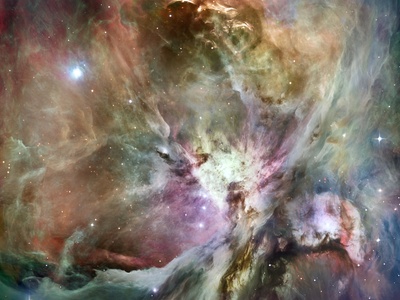
Orion Nebula
A vast stellar nursery visible to the naked eye in Orion’s sword. It’s the closest massive star-forming region to Earth and contains the famous Trapezium Cluster, a group of very hot, young stars at its core.

Crab Nebula
The glowing remains of a supernova witnessed by astronomers in 1054. Located in Taurus, it is powered by a rapidly spinning pulsar at its heart, the crushed core of the exploded star.
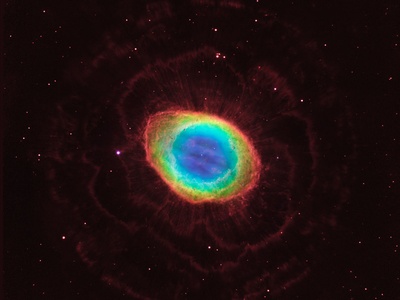
Ring Nebula
A classic example of a planetary nebula, located in the constellation Lyra. It appears as a colorful cosmic smoke ring, which is actually the glowing, cast-off layers of a dying sun-like star.

Eagle Nebula
A young star cluster in Serpens, surrounded by a stunning emission nebula. It is famous for the “Pillars of Creation,” towering columns of interstellar gas and dust where new stars are being born.
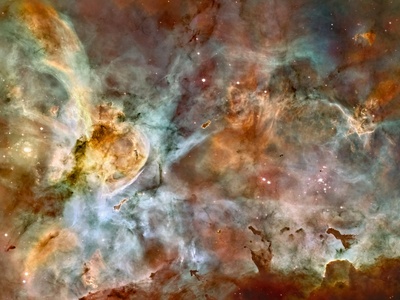
Carina Nebula
A colossal star-forming region in the southern sky, four times larger than the Orion Nebula. It contains some of the galaxy’s most massive stars, including the volatile Eta Carinae, and the famous Keyhole Nebula.
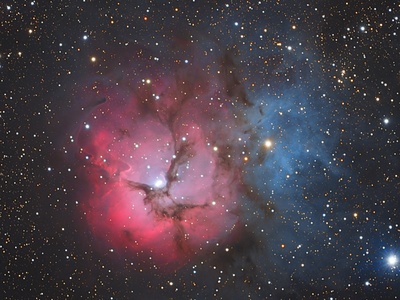
Trifid Nebula
Found in Sagittarius, this object is a rare combination of three nebula types: a red emission nebula, a blue reflection nebula, and dark dust lanes that divide it into three distinct lobes.
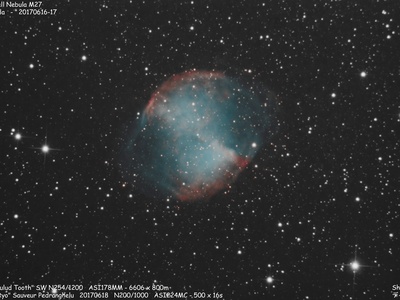
Dumbbell Nebula
The first planetary nebula ever discovered, located in Vulpecula. Its bright, two-lobed structure resembles a dumbbell or hourglass, formed by the glowing outer layers of a dying star.
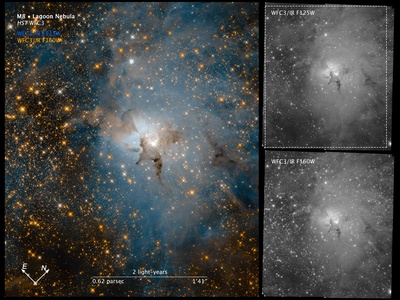
Lagoon Nebula
A giant interstellar cloud in Sagittarius, visible with binoculars as a bright patch. It is a very active stellar nursery containing the Hourglass Nebula (a small bright region) and the star cluster NGC 6530.

Helix Nebula
One of the closest and brightest planetary nebulae, located in Aquarius. Its appearance, looking down the axis of a cylinder of gas, has earned it the nickname “The Eye of God” or “Eye of Sauron.”

Veil Nebula
A vast and delicate-looking remnant of a supernova in Cygnus. It’s so large that different parts have their own names, like the Witch’s Broom (NGC 6960) and Pickering’s Triangle.
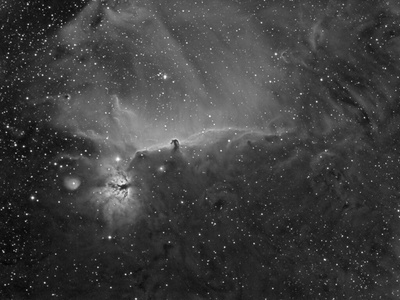
Horsehead Nebula
An iconic dark nebula in the constellation Orion. Its famous horse-head shape is a dense cloud of cold dust silhouetted against the bright red glow of the emission nebula IC 434 behind it.
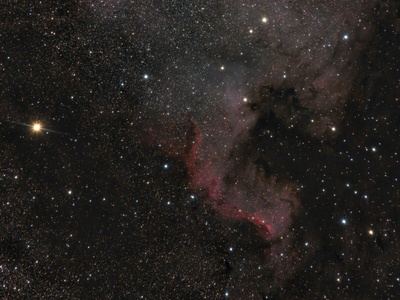
North America Nebula
A large emission nebula in Cygnus, near the bright star Deneb. Its shape strikingly resembles the continent of North America, complete with a prominent Gulf of Mexico region formed by dark dust.
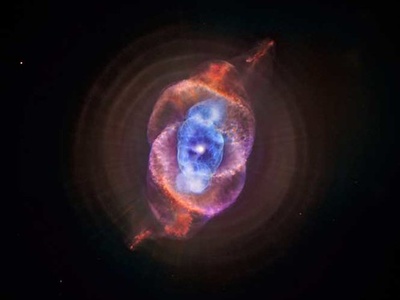
Cat’s Eye Nebula
A stunningly complex planetary nebula in the constellation Draco. Hubble images reveal intricate structures of knots, jets, and concentric gas shells, suggesting a very chaotic ejection process from its central star.
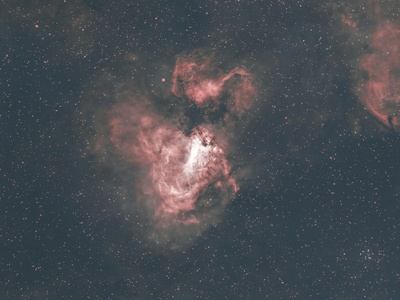
Omega Nebula
Also known as the Swan or Horseshoe Nebula, this is a bright star-forming region in Sagittarius. It is considered one of the brightest and most massive stellar nurseries in our galaxy.
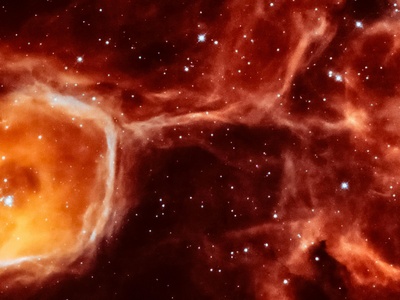
Bubble Nebula
Located in Cassiopeia, this nebula is a nearly perfect spherical shell of gas. It is being inflated by the powerful stellar wind from a massive, hot star at its center, creating a cosmic bubble.
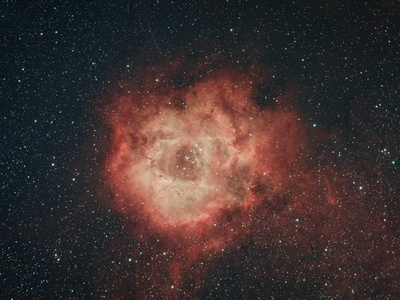
Rosette Nebula
A beautiful, circular H II region located in Monoceros. The nebula’s rose-like shape is sculpted by the stellar winds from the young open cluster of hot stars (NGC 2244) at its center.

Heart Nebula
A large emission nebula in Cassiopeia whose glowing gas and dark dust lanes form a distinctive heart shape. It is a vast star-forming region powered by a small cluster of stars near its center.
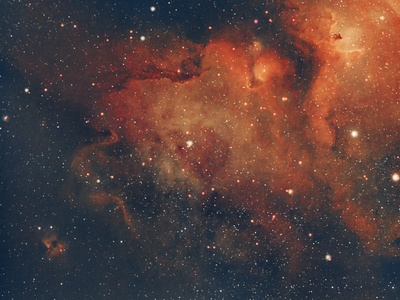
Soul Nebula
Often paired with the nearby Heart Nebula as the “Heart and Soul,” this is another vast star-forming region in Cassiopeia. It is sculpted by the winds of its young, massive stars into amazing shapes.
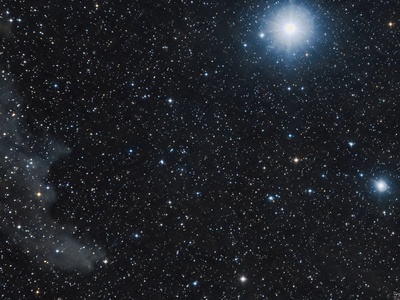
Witch Head Nebula
A very faint reflection nebula in Eridanus. It’s thought to be a gas cloud illuminated by the nearby supergiant star Rigel in Orion. Its shape strongly resembles a sinister witch’s profile.
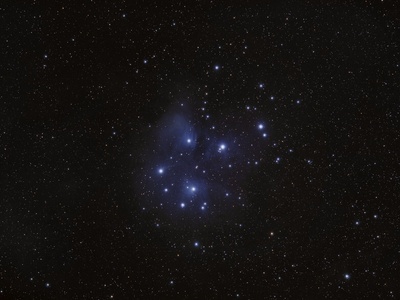
Pleiades Nebulosity
While primarily a star cluster, the Pleiades stars are passing through a dusty cloud, creating a beautiful blue reflection nebula. Located in Taurus, the cluster is easily visible as the “Seven Sisters.”
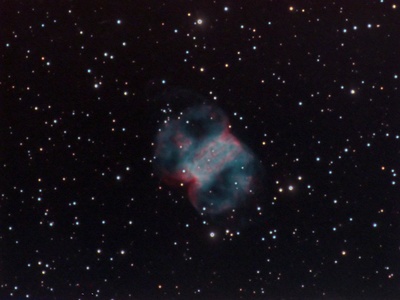
Little Dumbbell Nebula
A planetary nebula in Perseus. It has a central bar structure and two lobes, resembling a smaller version of the Dumbbell Nebula (M27), which is how it earned its common name.
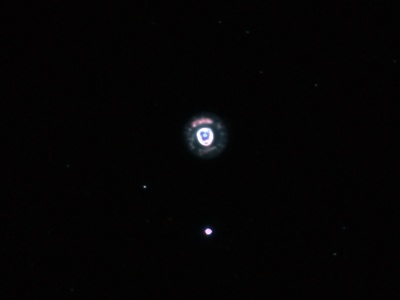
Eskimo Nebula
A bipolar planetary nebula in Gemini. From Earth, it resembles a face surrounded by a fur-lined parka hood. The “face” is a bubble of gas blown out by the central star’s strong wind.
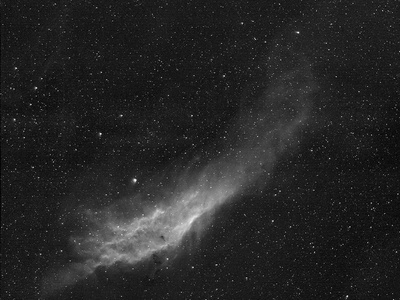
California Nebula
A large, but faint, emission nebula in Perseus. Its long, glowing filament of gas resembles the outline of the state of California. It is energized by the hot blue star Xi Persei.
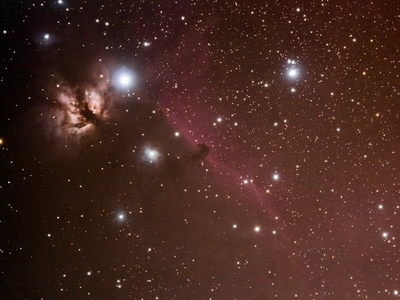
Flame Nebula
Located in Orion, right next to the bright star Alnitak in Orion’s belt. The glowing gas is interwoven with dark dust lanes, creating the stunning appearance of a celestial fire.

Cone Nebula
A dark, cone-shaped pillar of cold gas and dust in the constellation Monoceros. It is part of the larger star-forming region surrounding the Christmas Tree Cluster and Fox Fur Nebula.

Pelican Nebula
Located near the North America Nebula in Cygnus, this emission nebula’s shape resembles a pelican. It’s an active mix of star formation and evolving gas clouds, separated from its neighbor by dark dust.
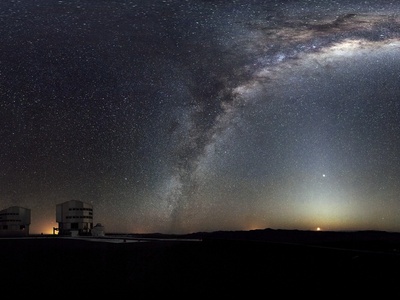
Coalsack Nebula
One of the most prominent dark nebulae, visible to the naked eye as a dark patch against the Milky Way in the southern constellation Crux. It forms the head of the “Emu in the Sky” in Aboriginal astronomy.
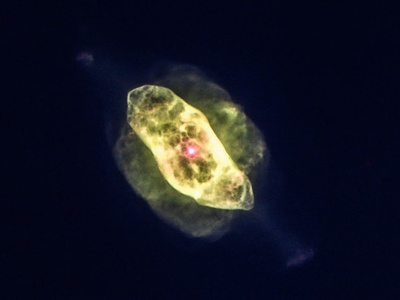
Saturn Nebula
A planetary nebula in Aquarius that gets its name from its shape, which resembles the planet Saturn with its rings tilted. It features two prominent jet-like extensions, or “ansae,” emerging from its sides.
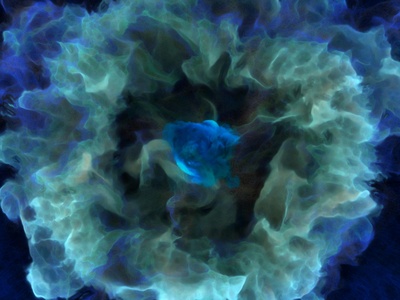
Blue Snowball Nebula
A bright planetary nebula in Andromeda, appearing as a small, fuzzy blue-green disk in amateur telescopes. Its internal structure is complex, with a faint outer halo and a brighter inner shell.
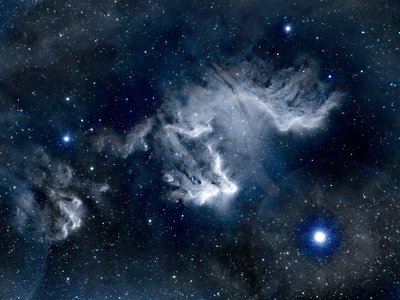
Ghost Nebula
A creepy-looking reflection and dark nebula in Cepheus. The nebula is illuminated by several embedded stars, and the flowing, dense gas clouds create shapes that look like ghostly figures.
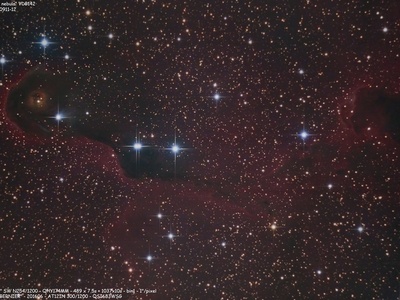
Elephant’s Trunk Nebula
A dense, elongated globule of gas and dust located within the much larger emission nebula IC 1396 in Cepheus. It’s a concentration of star formation, with young protostars hidden inside its tip.
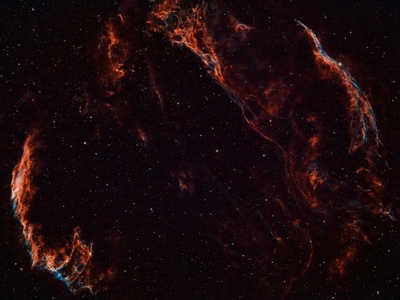
Crescent Nebula
A beautiful, arc-shaped nebula in Cygnus. It’s a bubble formed by the fast stellar wind from a massive Wolf-Rayet star colliding with slower material the star ejected when it was a red giant.
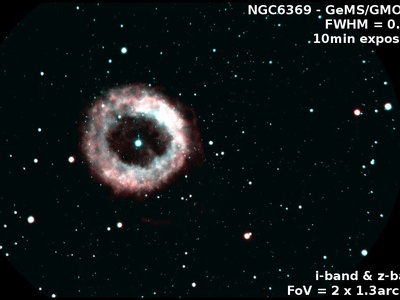
Little Ghost Nebula
A planetary nebula in Ophiuchus. It appears as a faint, ghostly ring of gas that was once the outer atmosphere of its central star. The ring is illuminated by the star which is now a hot white dwarf.
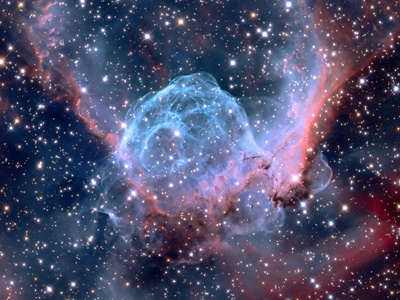
Thor’s Helmet Nebula
An emission nebula in Canis Major whose shape resembles the winged helmet of the Norse god Thor. The bubble is being inflated by stellar winds from a massive, hot Wolf-Rayet star at its center.

Running Chicken Nebula
A large complex of emission nebulae and a star cluster in the southern constellation Centaurus. Within the glowing gas are several dark Bok globules, which are potential sites of future star formation.
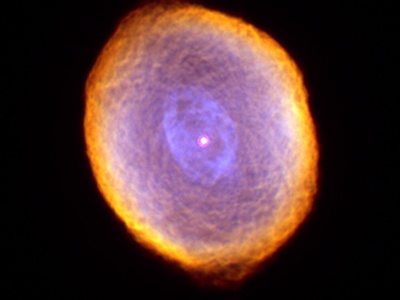
Spirograph Nebula
A planetary nebula in the constellation Lepus. It gets its name from the intricate, web-like patterns surrounding its central star, which resemble the geometric designs created by a spirograph toy.
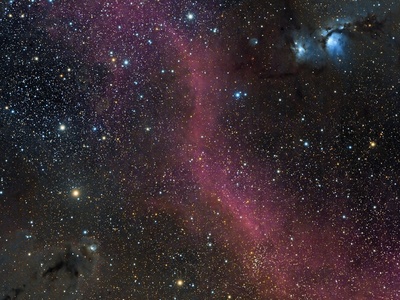
Barnard’s Loop
A massive, faint arc of an emission nebula located in the constellation of Orion, encircling much of the Orion Molecular Cloud Complex. It is thought to be the remnant of an ancient supernova.
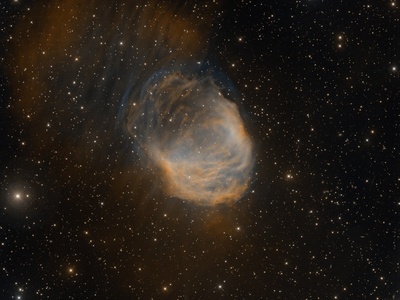
Medusa Nebula
A large, ancient planetary nebula in Gemini. Its faint, interwoven filaments of glowing gas resemble the serpentine hair of the mythological Medusa. It was long mistaken for a supernova remnant.
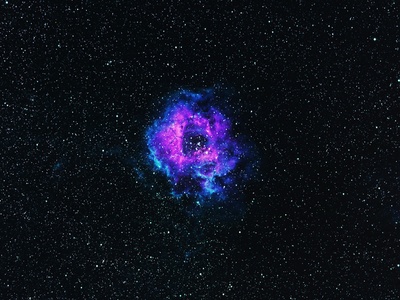
Prawn Nebula
A massive stellar nursery in the southern constellation Scorpius. It’s a huge region of glowing gas where new stars are being formed, but it is faint visually as it emits most light in non-visible wavelengths.
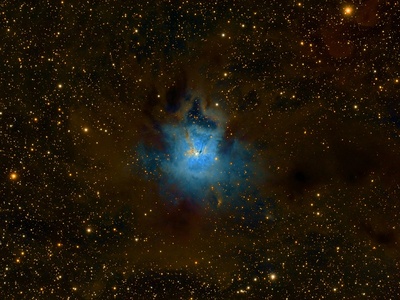
Iris Nebula
A beautiful, bright reflection nebula in the constellation Cepheus. The nebula’s dust and gas surround a hot, young star, and its delicate blue petals of light resemble an iris flower in bloom.

Owl Nebula
A planetary nebula located in Ursa Major, near the Big Dipper. It gets its name from its appearance in larger telescopes, where two dark patches within the circular nebula look like the eyes of an owl.
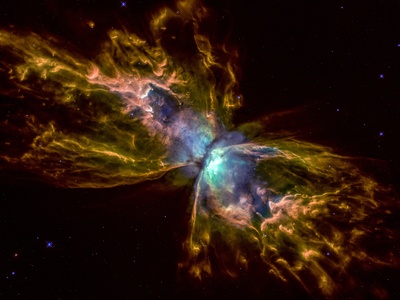
Butterfly Nebula
A stunning bipolar planetary nebula in Scorpius. Its intricate, wing-like structures are formed by gas being ejected at extremely high speeds from one of the hottest known stars, hidden within a dusty torus.

Gomez’s Hamburger
A young star surrounded by a protoplanetary disk, seen nearly perfectly edge-on. The star’s light reflects off dust above and below the disk, creating the appearance of a hamburger with a dark “patty” lane.
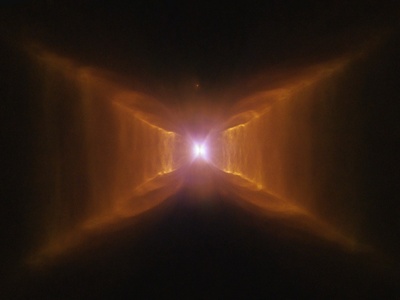
Red Rectangle Nebula
A protoplanetary nebula in Monoceros. It has a distinct X-shape and ladder-like rungs, likely caused by a binary star system at its center ejecting gas in cones and periodic bursts.
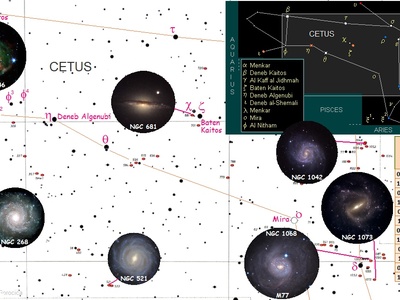
Skull Nebula
A large, low-surface-brightness planetary nebula in the constellation Cetus. Its ghostly, bubble-like appearance with voids inside gives it the appearance of a skull, floating in deep space.
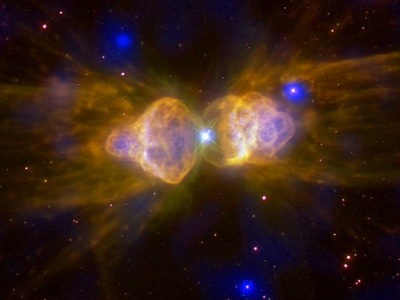
Ant Nebula
A young bipolar planetary nebula in the constellation Norma. Its distinctive shape, resembling the head and thorax of an ant, is created by very fast stellar winds from its hot central star.
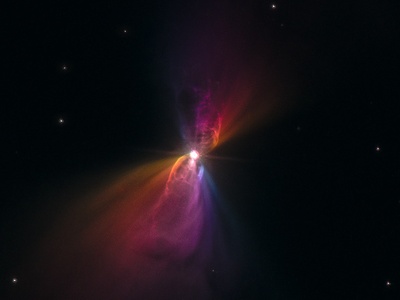
Boomerang Nebula
Known as the coldest place in the universe, with a temperature of just 1 Kelvin (−272 °C). This protoplanetary nebula in Centaurus is rapidly expanding, and this gas expansion dramatically cools it.
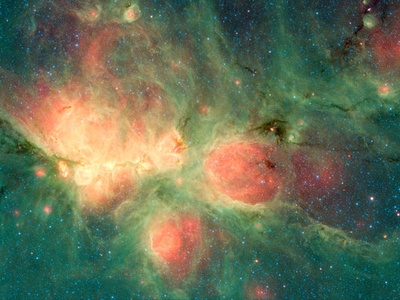
Cat’s Paw Nebula
A large star-forming emission nebula in Scorpius. Its three main lobes of glowing gas, created by clusters of young, hot stars, resemble the paw print of a giant cat trekking across the sky.
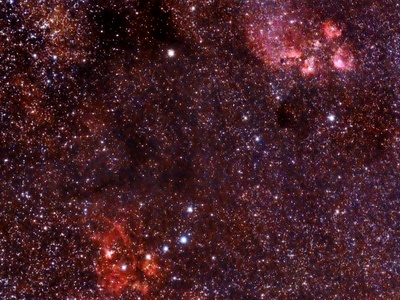
War and Peace Nebula
Located in Scorpius, this is another massive region of star formation. From one angle it looks like a dove (peace), and from another a skull (war). It hosts many extremely massive stars.
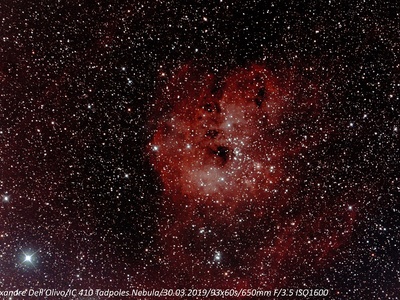
Tadpoles Nebula
An emission nebula in Auriga that surrounds star cluster NGC 1893. It’s famous for two “tadpole” pillars of gas and dust, sculpted by the intense radiation and winds from the cluster’s hot stars.
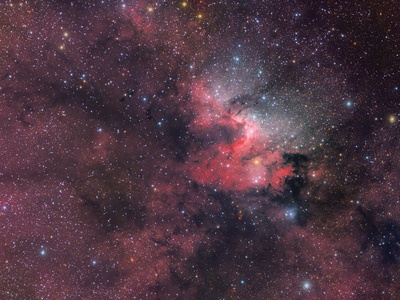
Cave Nebula
A dim but beautiful nebula complex in Cepheus. It’s a blend of emission, reflection, and dark nebulosity, with a bright curved arc that gives the impression of looking into a deep cosmic cave.
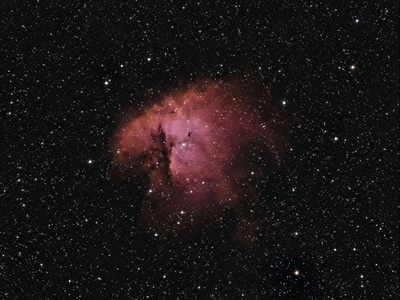
Pacman Nebula
An emission nebula in the constellation Cassiopeia. Its overall shape, especially the prominent dark dust lane cutting into it, resembles the character from the classic video game Pac-Man.

Statue of Liberty Nebula
A bright emission nebula in the southern constellation of Carina. Its central region contains looping, curved structures of glowing gas that strongly resemble the iconic Statue of Liberty holding her torch.
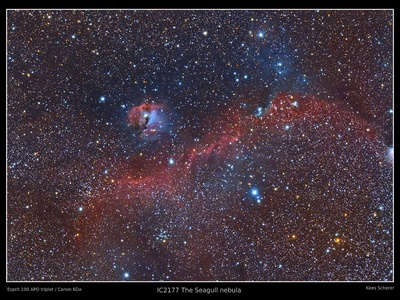
Seagull Nebula
A large, faint emission nebula that straddles the border between Monoceros and Canis Major. The complex of dust and glowing gas, with a bright star marking the eye, resembles a seagull in flight.
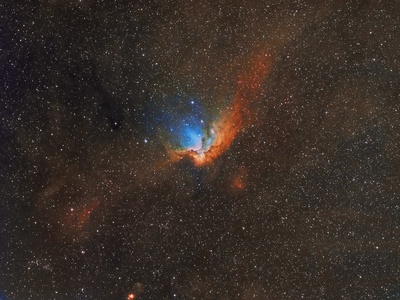
Wizard Nebula
An open star cluster embedded within a beautiful nebula in Cepheus. The glowing gas and dark dust are shaped by stellar winds into a form reminiscent of a sorcerer with a pointed hat and flowing robes.
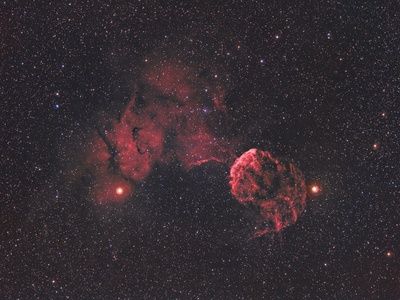
Jellyfish Nebula
A supernova remnant in the constellation Gemini. Its filamentary, shell-like structure resembles a jellyfish drifting through the cosmos. The supernova that created it likely occurred thousands of years ago.
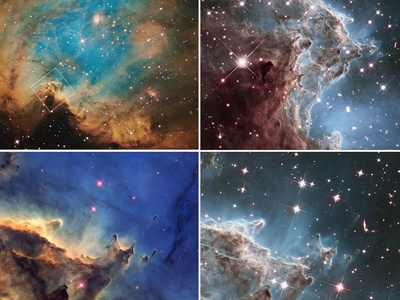
Monkey Head Nebula
An H II emission nebula in the constellation Orion. The pillars of gas and dust sculpted by the radiation from young, hot stars give it a shape that resembles the head of a monkey in profile.

Gum Nebula
An enormous, faint emission nebula in the southern constellations of Puppis and Vela. It is thought to be the expanding remnant of one or more ancient supernovae, so large it spans over 36 degrees of the sky.
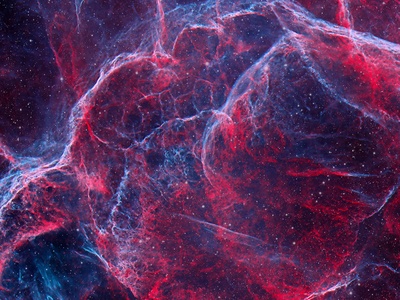
Vela Supernova Remnant
Located within the larger Gum Nebula, this is the debris from a supernova that exploded around 11,000 years ago. It contains the Vela Pulsar, a rapidly spinning neutron star left over from the explosion.
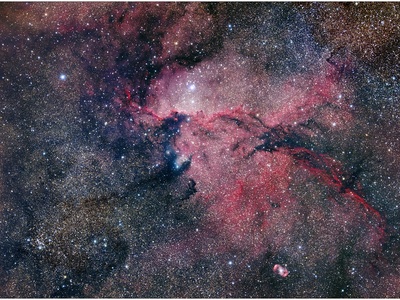
Fighting Dragons of Ara
A large emission nebula in the southern constellation Ara. The powerful stellar winds from young stars in the embedded cluster NGC 6193 have sculpted the nebula’s dark dust into dynamic, dragon-like shapes.

Ghost of Jupiter
A bright planetary nebula in Hydra. In a small telescope, it appears as a pale blue-green disk of a similar apparent size to the planet Jupiter, earning it its spectral nickname.
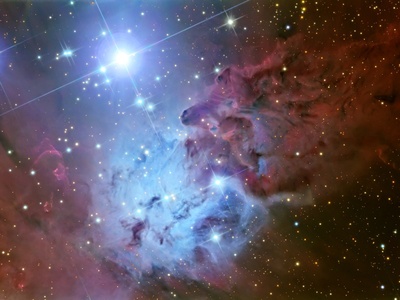
Fox Fur Nebula
Part of the large star-forming complex NGC 2264 in Monoceros. This specific patch of nebulosity gets its name from its rich, chaotic texture and reddish color, resembling the pelt of a red fox.
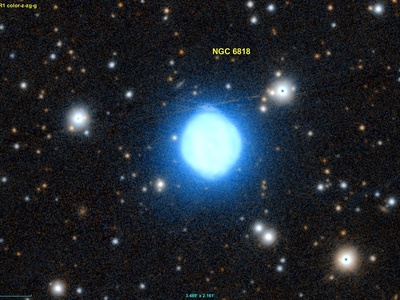
Little Gem Nebula
A planetary nebula in Sagittarius. It displays a nested structure with a bright, elongated inner bubble surrounded by a larger, more spherical outer region, all glowing in brilliant shades of green.
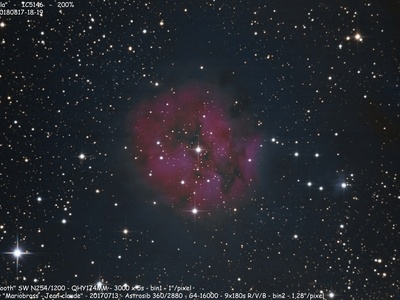
Cocoon Nebula
A compact star-forming region in Cygnus. It features a young star cocooned within a bright red emission nebula and blue reflection nebula, with a long dark nebula trailing away from it.
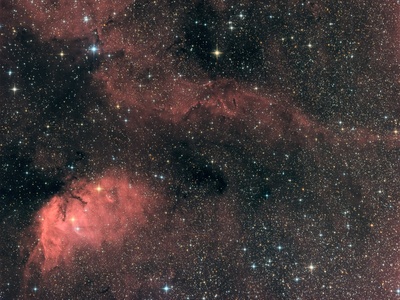
Tulip Nebula
An emission nebula in the constellation Cygnus. It is being energized by a hot star within it, and its shape, when viewed in astrophotographs, resembles the outline of a tulip flower.

Pipe Nebula
A large, complex dark nebula in the constellation Ophiuchus. It consists of two main parts: the “stem” and the “bowl,” forming a shape like a smoking pipe against the starry background of the Milky Way.

Snake Nebula
A small, S-shaped dark nebula located within the larger Pipe Nebula complex in Ophiuchus. Its twisting, serpentine dust lane stands out starkly against the dense star fields of the Milky Way.
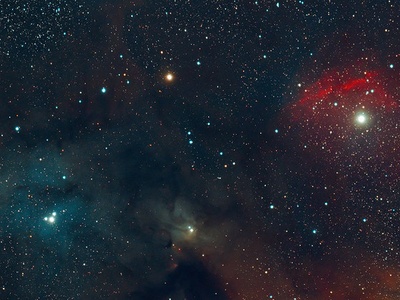
Rho Ophiuchi Cloud Complex
One of the closest star-forming regions to the Sun, located in Ophiuchus. This vast complex is a colorful mix of red emission nebulae, blue and yellow reflection nebulae, and dark dust lanes.
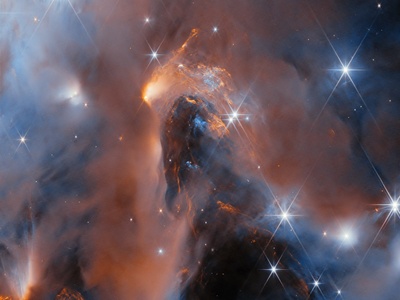
NGC 1333
A vibrant reflection nebula in the constellation Perseus. It is part of the Perseus molecular cloud and is an extremely active region of star formation, containing hundreds of very young stars.
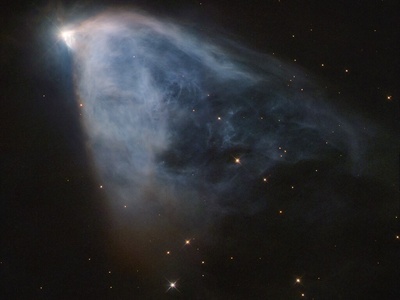
Hubble’s Variable Nebula
A fan-shaped nebula in Monoceros illuminated by the star R Monocerotis. It famously changes its shape and brightness over weeks as dense dust clouds orbit the star, casting shifting shadows.

Keyhole Nebula
A small, dark cloud of cold molecules and dust within the much larger Carina Nebula. Its distinctive keyhole shape is silhouetted against the bright background of hot, glowing gas behind it.

Retina Nebula
A bipolar planetary nebula in the constellation Lupus. Seen from Earth, we are viewing the nebula from its side, giving it a rectangular shape. The dust lanes crossing it resemble the retina of an eye.
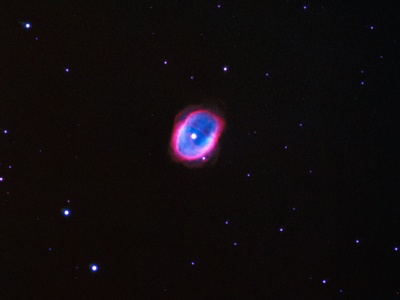
Southern Ring Nebula
A stunning planetary nebula in the southern constellation Vela. It features a bright central binary star system and a complex, filamentary structure, famously imaged by the James Webb Space Telescope.
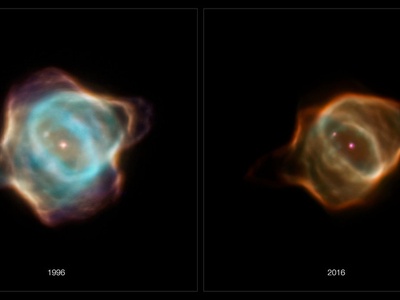
Stingray Nebula
The youngest known planetary nebula. Located in the southern constellation Ara, astronomers have watched it form and then rapidly fade in real-time over just a few decades, a unique astronomical event.
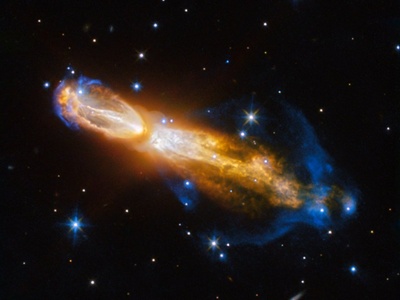
Blinking Planetary Nebula
Found in Cygnus, this nebula exhibits an interesting optical illusion. When you look directly at the central star it seems to disappear, but it blinks back into view with averted vision.

Cygnus Wall
A dense, highly structured region of star formation within the larger North America Nebula. This “wall” is a ridge of compressed gas and dust, glowing brightly from the radiation of nearby young stars.

Dark Doodad Nebula
A long, narrow dark nebula in the southern constellation Musca. It stretches for about three degrees across the sky, appearing as a serpentine silhouette against the dense star fields of the Milky Way.
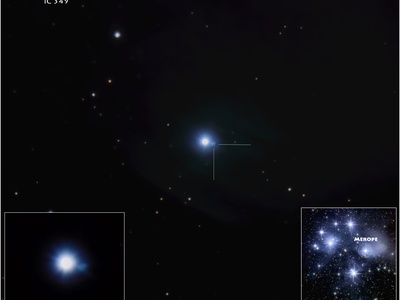
Merope Nebula
A bright reflection nebula surrounding the star Merope in the Pleiades star cluster (M45). Part of the nebula, IC 349, is extremely close to the star, showing remarkable filamentary structure.
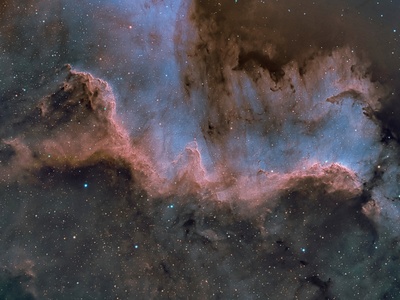
NGC 2023
A bright reflection nebula in Orion, located just near the famous Horsehead Nebula. It is illuminated by a massive, hot B-type star and is one of the brightest sources of fluorescent molecular hydrogen.
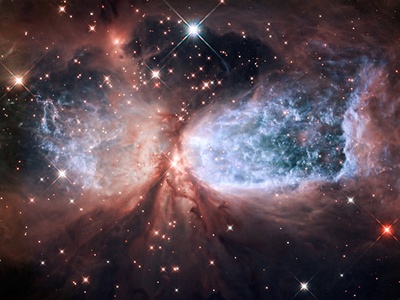
Celestial Angel Nebula
A compact star-forming region in Cygnus. A massive young star at its center has ejected material in two opposing lobes, creating a striking hourglass or “celestial angel” shape of super-heated gas.
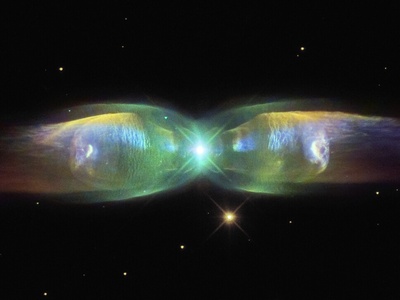
Minkowski’s Butterfly
A striking bipolar protoplanetary nebula in Ophiuchus. Its two lobes of material streaming from the central star system give it a remarkable resemblance to a butterfly’s wings.
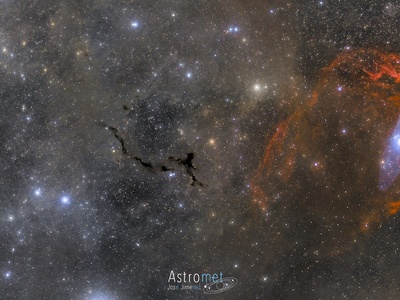
Flying Bat Nebula
A reflection nebula located in a relatively dark and empty region of the constellation Orion. Its shape, illuminated by embedded stars, resembles a giant bat with its wings spread against the darkness.

Dark Tower of Scorpius
A prominent dark nebula near the bright star cluster NGC 6231 in Scorpius. It appears as a towering, opaque pillar of dust, silhouetted against the bright backdrop of the Milky Way’s stars.
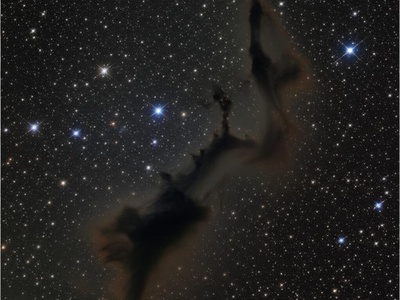
Lynds’ Dark Nebula 1622
A spooky-looking dark nebula in Orion, located near Barnard’s Loop. Its twisted, ghostly shape, silhouetted against faint background nebulosity, makes it a popular target for astrophotographers.
Enjoyed this article?
Get daily 10-minute PDFs about astronomy to read before bed!
Sign up for our upcoming micro-learning service where you will learn something new about space and beyond every day while winding down.

